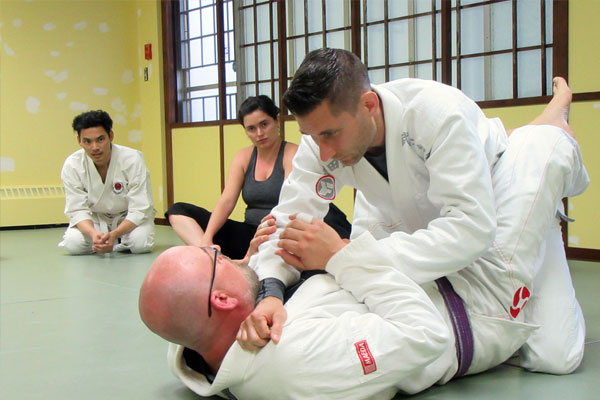Martial Arts Near Me
Jiu-Jitsu
Jiu-Jitsu, also known as Ju-Jutsu or Jujitsu, is a dynamic and versatile martial art that has a rich history and continues to thrive in the modern world. Originating in Japan, it encompasses a wide range of techniques and strategies that focus on using an opponent's energy against them. From its ancient roots to its transformation over time, Jiu-Jitsu has evolved into a comprehensive martial art that is practiced for self-defense, sport, and personal development.
The history of Jiu-Jitsu dates back to ancient Japan, where it was developed by samurai warriors as a method of close combat in situations where weapons were ineffective or unavailable. Its origins can be traced to the early feudal period (1185-1603), during which Japan was divided into various warring factions. The warrior class, known as the samurai, required effective combat techniques that did not rely solely on weapons. Thus, Jiu-Jitsu emerged as a practical and efficient method of unarmed combat.
Jiu-Jitsu, which translates to "gentle art" in Japanese, emphasizes using an attacker's energy and strength against them. This concept formed the basis of many techniques found in Jiu-Jitsu. By utilizing joint locks, throws, chokes, and strikes, practitioners are able to subdue an opponent regardless of their size or strength. The art was refined and systematized over centuries, with different schools and styles emphasizing various aspects and approaches.

During the 19th century, Jiu-Jitsu gained broader recognition through the efforts of Jigoro Kano, the founder of Judo. Kano, a student of various Jiu-Jitsu schools, sought to restructure the art and reduce its focus on dangerous techniques. He aimed to create a martial art that could be practiced with minimal risk of serious injury. This led to the development of Judo, in which Jiu-Jitsu techniques were adapted and combined with a system of throws, falls, and pins.
As Judo gained popularity, Jiu-Jitsu continued to evolve. In the early 20th century, a Brazilian named Mitsuyo Maeda, also known as Count Koma, traveled to various countries to showcase his skills. This led to the spread of Jiu-Jitsu to Brazil, where it found a new home and underwent further development. The Gracie family, particularly Helio Gracie, played a pivotal role in shaping Brazilian Jiu-Jitsu (BJJ) into its distinct form. BJJ became renowned for its emphasis on ground fighting, joint locks, and chokes, making it highly effective for self-defense and martial arts competitions.
In recent decades, Jiu-Jitsu has become increasingly popular worldwide, attracting participants of all ages and backgrounds. The appeal of Jiu-Jitsu lies in its practicality, its emphasis on leverage and technique over brute strength, and its focus on mental development as well as physical prowess. Jiu-Jitsu equips practitioners with the ability to defend themselves in real-world situations, regardless of size or gender.
Competitively, Brazilian Jiu-Jitsu has gained widespread recognition through events such as the Ultimate Fighting Championship (UFC). BJJ practitioners have consistently displayed their skills, proving the effectiveness of the art's techniques in mixed martial arts competition. The prominence of BJJ in MMA has led to an increased interest in Jiu-Jitsu training globally, with numerous academies and schools devoted to its instruction.
Furthermore, Jiu-Jitsu fosters discipline, perseverance, and personal growth. It teaches important life skills such as problem-solving, patience, and self-awareness. The art promotes mental and physical well-being, providing practitioners with an avenue for stress relief and self-improvement.
Jiu-Jitsu continues to evolve, with practitioners constantly exploring new techniques and strategies to enhance their skills. Various styles and schools of Jiu-Jitsu exist today, each offering different approaches and perspectives. Whether it is the traditional Japanese Jiu-Jitsu, Brazilian Jiu-Jitsu, or other adaptations, the core principles of using an opponent's energy and technical proficiency remain constant.
Jiu-Jitsu stands as a testament to the evolution of martial arts. What began as a method of combat for samurai warriors in feudal Japan has transformed into a versatile martial art and sport practiced worldwide. Its history is rooted in centuries of refinement and adaptation, resulting in various styles and disciplines. Today, Jiu-Jitsu continues to captivate practitioners, offering effective techniques for self-defense, a competitive platform for athletes, and personal development for individuals seeking physical prowess and mental well-being.